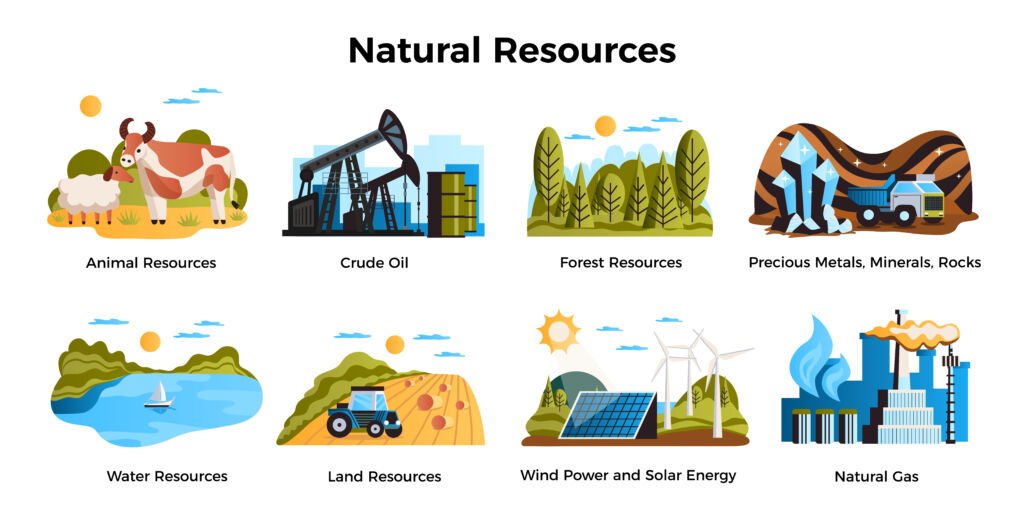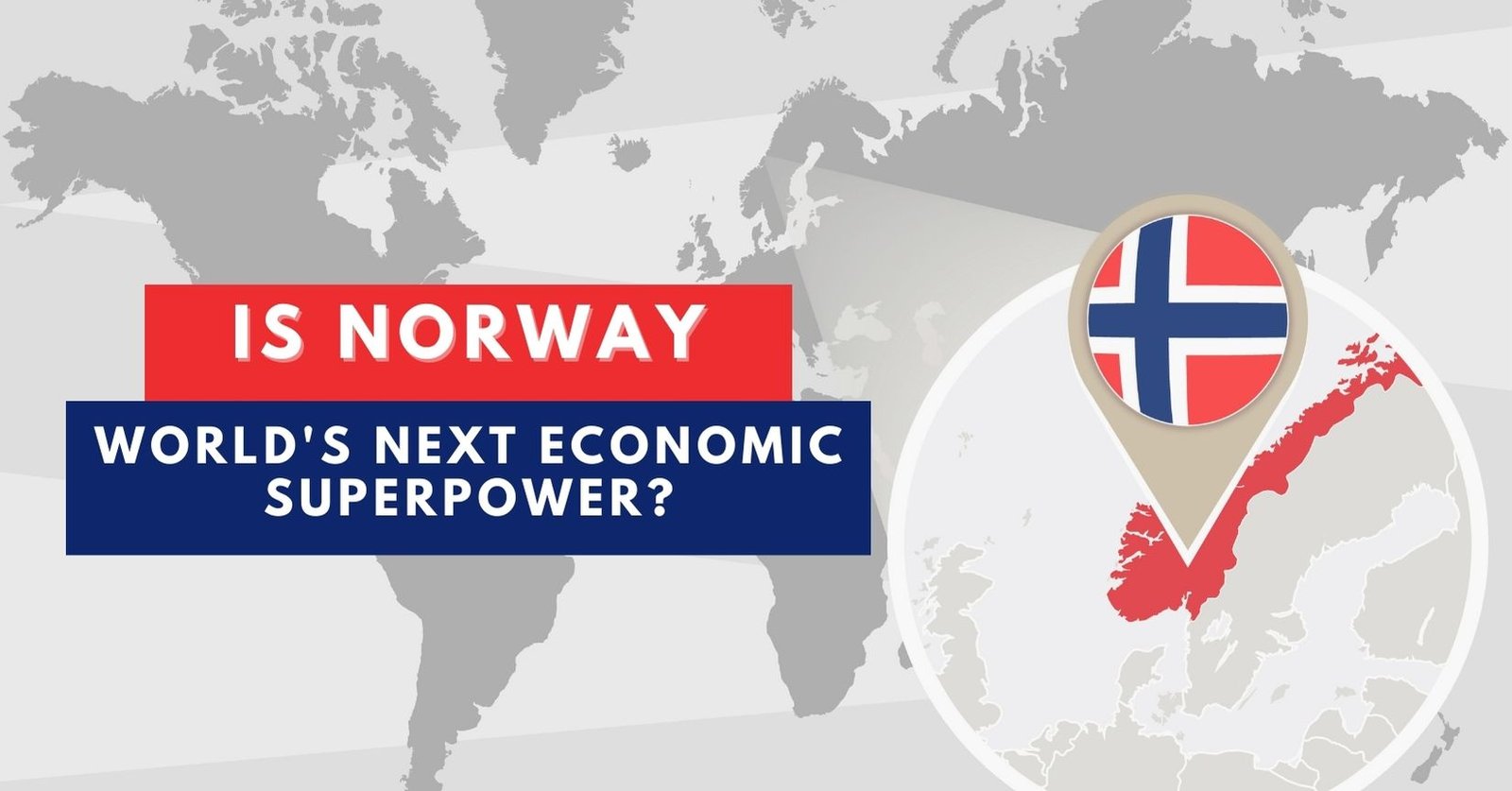Introduction:
A nation once known for its fjords and fishing villages is set to surpass traditional economic powerhouses in 2024. That nation is Norway. Norway is becoming the world’s richest country, and its path to the pinnacle of global wealth is a story worth exploring. How did this small Scandinavian country transform itself into an economic juggernaut? The answer lies in an extraordinary combination of factors:
- Oil and Gas Reserves: Norway’s fortuitous discovery of substantial North Sea oil and gas reserves fueled the initial boost to its economy.
- Prudent Management: Instead of squandering sudden wealth, Norway exercised incredible foresight, channeling oil and gas profits into a massive sovereign wealth fund and investments for an enduring future.
- Focus on the Future: Unlike nations reliant solely on finite resources, Norway diversified its economy and now possesses thriving tech industries, sustainable power generation, and world-leading aquaculture.
- Shared Prosperity: Norway is becoming the world’s richest country, and it does so while fostering one of the world’s most equal societies. High wages, extensive social services, and an emphasis on quality of life ensure broad-based prosperity.
Norway’s journey defies the expectations of oil-rich states and offers a captivating model for cultivating long-term economic success and inclusive growth. Let’s delve deeper into how Norway is becoming the world’s richest country.
The Power of Natural Resources:
In the late 1960s, Norway’s fortunes took a dramatic turn. The discovery of vast oil and gas reserves in the North Sea promised transformative wealth. Yet, Norway learned from the mistakes of other resource-rich nations that had often succumbed to overspending and economic mismanagement. They made a pivotal decision: this windfall would be manageable.

- Oil and Gas Wealth: Norway established a system where oil and gas profits were treated not as an immediate revenue stream but as national savings for future generations.
- Sovereign Wealth Fund: This revenue flows into the Government Pension Fund Global, more commonly known as the Oil Fund. It is worth over $1.3 trillion and is the world’s largest sovereign wealth fund. The returns from its diverse global investments ensure that Norway is becoming the world’s richest country.
- Ethical and Long-Term: The Oil Fund operates with exceptional ethical guidelines, excluding some companies that uphold environmental and human rights standards. Significantly, Norway spends only a tiny percentage of the fund’s annual returns, maintaining a laser focus on sustained value for decades to come. This strategy transforms a finite natural resource into a source of enduring economic stability while protecting Norway’s future. With prudent foresight, Norway is becoming the world’s richest country through responsible resource governance.
Beyond Oil: Economic Diversification and Innovation
While its Oil Fund generates headlines, Norway needs to be content to rest on its petroleum wealth. Recognizing that oil won’t last forever, the nation has become a visionary leader in diversification and innovation. Here’s how:
◉ Robust Industries:
- Harnessing Nature’s Power: With vast hydroelectric resources and growing wind power investments, Norway generates almost all its electricity from renewables. This creates a green energy industry and provides affordable power for businesses.
- Maritime Masters: Norway’s shipbuilding legacy hasn’t faded. It is a global leader in specialized vessels, advanced offshore technology, and sustainable shipping solutions.
- Seafood Superpower: Aquaculture and fisheries have modernized in Norway. Sustainable practices and high-tech breeding create a booming seafood industry.
- Tech Hub: From software startups to green energy firms, Norway’s thriving tech and innovation sectors showcase its adaptable talent pool.
◉ Government Support: Championing the Future:
Norway’s government doesn’t merely oversee this shift; it actively fuels it. Substantial research and development investments, green innovation grants, and educational incentives are cornerstones of its strategy. This forward-looking approach helps new industries find their footing, ensuring continuous economic growth.
Norway’s strategic investments in these sectors ensure that even as its oil resources eventually decline, they have built a durable engine driving diversified economic success. With this dynamic combination of industries, Norway is becoming the world’s richest country, demonstrating environmental leadership and sustainable development practices.
A Strong Social Foundation:
Norway’s wealth isn’t merely in its bank accounts – it’s in the extraordinary quality of life for its citizens. The country ranks near the top of global well-being measures like the Human Development Index and World Happiness Report. Here’s what underpins this success:
◉ High Standard of Living:
- Universal Healthcare: All Norwegian citizens have access to quality healthcare regardless of income, promoting a healthy and productive population.
- Education Excellence: Education is free and highly valued in Norway, from primary school to university. This creates a skilled workforce vital to innovation.
- Robust Safety Net: Generous unemployment benefits, parental leave, and pensions provide security, lowering societal stress and contributing to economic stability.
◉ Income Equality: Addressing Disparity
Norway works proactively to minimize income inequality through taxation and social spending. This focus leads to greater social cohesion, less economic anxiety, and increased opportunities for all.
The nation’s emphasis on shared prosperity translates into a healthy, educated, and secure populace. These are foundational strengths, not mere expenses. This prioritization contributes to Norway’s smooth economic functioning. When people feel supported, they thrive professionally. This ultimately drives innovation and overall success.
Norway is becoming the world’s richest country while understanding that true wealth lies in the welfare of its people. Their commitment to social programs is an indispensable investment in a bright and sustainable future.
Challenges and Outlook: WHY NORWAY IS BECOMING THE WORLD’S RICHEST COUNTRY
Norway’s path to being the world’s richest country has its challenges. Being realistic about potential complications prepares them for future adaptability. Here are some key considerations:
- Oil Dependence: Despite ongoing diversification, Norway’s economy still draws substantial wealth from the oil and gas sector. At the same time, the Oil Fund buffers against fluctuating prices, shifting global energy demand calls for continuous innovation across industries to guarantee the continued success that makes Norway the world’s richest country.
- Aging Population: Like many developed nations, Norway faces an aging demographic, increasing pressure on its workforce and social welfare systems. Tackling this requires strategies to bolster immigration, upskill older workers, and optimize pension frameworks for long-term sustainability.
- Globalization’s Impact: As a small nation highly integrated into the global economy, Norway is impacted by external economic tides. Maintaining competitiveness, especially as Norway is becoming the world’s richest country, requires constant adaptation, with flexible regulations to nurture evolving businesses and attract global talent.
Despite these challenges, Norway’s economic and social policies provide a resilient foundation. Strong governance, an innovation-driven mindset, and a commitment to long-term planning prepare the nation to navigate complex future scenarios. While Norway is becoming the world’s richest country, remaining so will require careful stewardship and adaptability in the ever-changing global landscape.
Lessons for the World:
Norway’s journey to becoming the world’s richest country doesn’t just highlight its success – it offers valuable blueprints for nations at all stages of development. Here are key takeaways:
◉ Resource Management: The Power of Long-Term Thinking
- Resource abundance can be a curse if not treated as a long-term asset. Norway teaches us that it’s vital to channel revenues from finite resources responsibly. A sovereign wealth fund like Norway’s ensures benefits extend beyond immediate profits.
◉ Social Investment: A Foundation for Prosperity
- Norway’s robust healthcare, education, and social safety nets might seem costly, but these are investments in their most significant asset – people. A healthy, educated, and secure population generates innovation, high productivity, and societal stability.
◉ Prudent Economic Policies: Planning for the Future
- Norway’s emphasis on fiscal responsibility, diversification, and a focus on the future exemplifies long-term economic thinking. They avoided booms and busts, invested in new industries, and ensured sustainability as Norway is becoming the world’s richest country.
While every nation has unique circumstances, Norway’s rise offers compelling lessons. Prioritizing long-term stability over short-term gains, investing in human capital, and responsible governance create pathways to shared prosperity. Norway becoming the world’s richest country serves as a potent reminder that economic and social growth go hand-in-hand.
Conclusion:
Norway’s imminent coronation as the world’s richest country in 2024 represents more than just economic figures. The keys to its success offer a multifaceted story applicable worldwide:
- Visionary Resource Stewardship: While fueled by the initial benefits of oil, Norway rejected reliance on those resources, instead establishing them as a springboard for a secure future through prudent management.
Diversification for Resilience: By actively nurturing thriving tech, sustainable energy, aquaculture, and maritime sectors, Norway has become far less vulnerable to the ebb and flow of a single commodity.
Equality as Strength: Norway prioritizes shared prosperity across its population. This approach minimizes class tensions while maximizing human potential, boosting innovation and economic health.
A Sustainable Model?
The question remains – as Norway is becoming the world’s richest country, can its approach become a template for others? While no nation can perfectly replicate the specific elements of the “Norwegian Model,” aspects are undeniably transferable:
- Long-Term Thinking: Resource-rich nations can learn from Norway to create enduring societal wealth instead of fleeting riches.
- Investing in People: The benefits of solid healthcare, education, and social security nets transcend mere expenditure – they create an environment where entire populations can thrive.
- Balancing Profit and Progress: Norway is becoming the world’s richest country while striving for sustainability in its practices. It showcases that environmental responsibility and economic success need not be mutually exclusive.
Norway’s ascent holds invaluable lessons. This isn’t just a rise in wealth; it exemplifies a way of governing that fosters lasting prosperity for the nation and its people. This approach can potentially guide other nations in seeking a better equilibrium between economic vitality and social well-being – a wealthy legacy.






Glad to know the unknown.